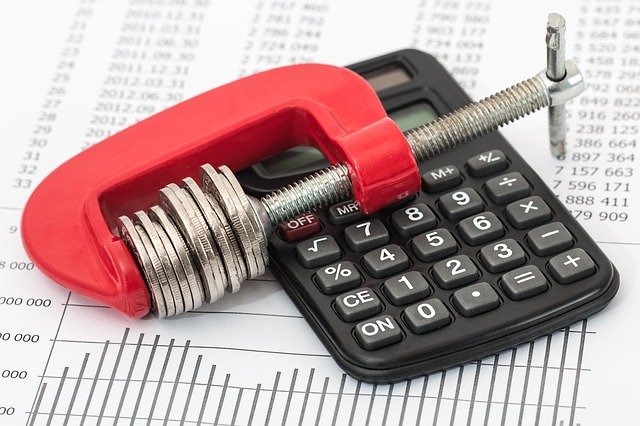The primary goal of personal finance is often stated to be spending less than we earn. It helps us with debt consolidation, emergency savings, and retirement savings. A budget can help you understand and direct your spending.
Budgeting allows you to prioritize your expenses and ensure you have enough money to meet your financial objectives. It can help you stay out of debt or pay it down. Making a budget tailored to your specific needs can help you stay within your budget while saving for a variety of expenses.
These budgeting tips can help you stay on track while still having fun.
1. Try Simple Budgeting Plans
Try to make sure that you have a simple budgeting plan that you can easily understand without needing counsel from a professional.
A simple budgeting plan is the foundation of a sound financial strategy. It may provide you valuable insight into where your money is going and where it may be spent more effectively.
It will assist you in identifying areas where you are overspending. It can also be configured to tolerate both planned and unanticipated excesses. Making a simple budget can be done in four steps.
- For at least a month, keep all of your electronic or paper bills, receipts, wage stubs, bank statements, and any other documentation of income or spending in one place. Alternatively, keep a regular track of your monthly income and outgoings.
- Write down all your profits and then make a list of all your expenses such as rent, credit card, utility bills, etc.
- Subtract the expenses from the revenue. If the revenue exceeds the expenses, you’re doing a good job. If the expenses exceed the revenue, then you may want to balance your budget.
Analyze your spending and categorize it as fixed, variable, and discretionary. Fixed expenses (e.g. rent) are predictable. Variable expenses (e.g. electricity bills) can be reduced and discretionary expenses are your wants and needs and provide the best chance for savings
2. Track Your Expenses Every Few Days
It will be eye-opening to keep track of every penny you spend for a short period. Begin tracking your expenses to identify areas where you may be unwittingly overspending your money.
Ideally, you should keep track of your expenditures for a month, but even a week’s worth of data can reveal a lot about your spending habits.
In most budgets, cash expenditures are typically the most significant cause of leakage. If you don’t keep track of everything you spend your money on, you’ll get a skewed picture of your spending and where your money is going.
3. Analyze Your Money Habits
Examine how you may change your spending and earning habits to meet your budgetary objectives. The vast majority of the time, it is possible to minimize or eliminate spending to stick to a budget, even if just for a short time.
If you buy coffee five days a week at $4 per cup, you will spend $20 on coffee per week, as an example. That adds up to more than $1,000 for a year. You can put that money toward other financial goals in exchange for quitting drinking coffee or reducing the number of days you buy it.
4. Exchange Money Habits
If you always end up forgetting to pay your bills on time, you can put up automated systems in place that automatically pay your bills. This automated system is called automatic bill payment.
Set up automatic payments for your savings account and other bills, such as electricity and internet, ahead of time. It can help you make better financial decisions and transfer money directly to your savings account to assist reduce your spending temptation.
Auditing your bank and credit card data will also help you discover unnecessary but automatic transactions. These are minor expenses that you may have neglected when creating your budget, such as:
- Subscriptions to streaming services you never use are a waste of money.
- Those paid subscriptions that you were charged for after your free trial period finished.
- Magazine or newspaper subscriptions that you no longer read are tax-deductible.
5. Review Your Budget
It is not possible to make a budget and then completely disregard it. You should review your budget and actual spending at least once a month to assess your progress and make any required changes.
Some expenses, such as holiday gifts or vehicle registration payments, vary from month to month or show relatively infrequently during the year. In addition, income can fluctuate. Maybe you made a little more money from your dog-walking business this month than you did the previous month.
Life changes can cause changes in your budget too. Review your budget monthly to notice them on time and keep track of them.
6. Consider Personal Finance Tools
Budgeting can be even more simple with the proper technology. Unfortunately, not all apps fit everyone. However, there are several cash advance apps that work available for free or at a little cost.
A variety of tools connect directly to your bank account and credit cards, automatically downloading and classifying transactions. They also include smartphone and tablet applications that provide a clear picture of how money is spent.
7. Reward Yourself
Reaching the goals of your budget is not a simple task. So learn to reward yourself with little treats whenever you’re successful with that. It can be as simple as additional Starbucks every week for a month. Since you stick to your budget, these little treats come from the extra money you saved.
The Bigger Picture
Budgeting will provide you with a clear picture of how much you spend each month. It will assist you in achieving your financial goals.
Reestablishing a budget can take a month or two. Allow for some leeway because you’ve been living without a budget for a long time. If things don’t seem to be falling into place, don’t be hesitant to seek assistance.







Recent Comments